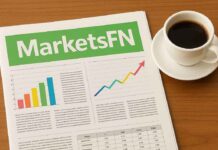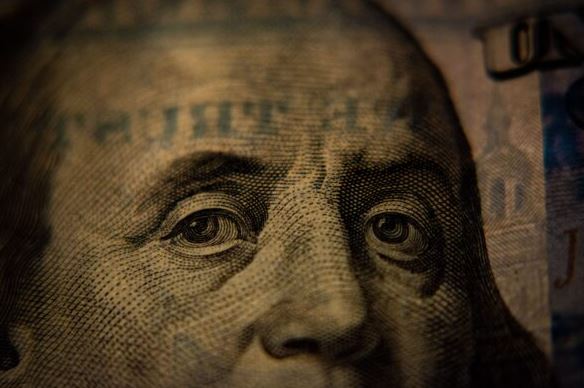In an era where traditional stocks and bonds feel increasingly stale, investors are flocking to alternatives for higher yields and diversification. Enter Business Development Companies (BDCs)—publicly traded vehicles that lend to and invest in small- and mid-sized businesses, offering a taste of private credit without the illiquidity headache. As of November 3, 2025, with interest rates stabilizing post-Fed cuts and economic uncertainty lingering, BDCs have surged in popularity, pulling in retail money through their exchange-listed shares. They’re often hailed as the “democratization of alternatives,” making high-yield, middle-market debt accessible to the average brokerage account holder rather than just ultra-high-net-worth folks locked into private funds.
But BDCs aren’t a free lunch. They come with caveats: volatile share prices, sensitivity to credit cycles, and payouts that can fluctuate with portfolio health. Net Asset Value (NAV) discounts have widened to 16-22% amid 2025’s market jitters, signaling fear but also opportunity. Idiosyncratic risks—like non-accrual loans ticking up to 2-3% industry-wide—add spice, but for income seekers, yields averaging 10%+ remain irresistible.
In this deep dive, we’ll unpack eight explosive things to know about BDCs as a liquid alternative strategy. We’ll blend the basics with real-world analysis, spotlighting top tickers like Ares Capital (ARCC), Main Street Capital (MAIN), FS KKR Capital (FSK), and Blackstone Secured Lending (BXSL). Here’s why BDCs could supercharge your portfolio—or bite back if you’re not careful.
1. BDCs Are Publicly Traded Private Credit Machines
At their core, BDCs are specialized investment companies created by Congress in 1980 under the Investment Company Act of 1940 to spur lending to underserved U.S. middle-market firms (those with $10-250 million in EBITDA). Unlike traditional banks, which favor blue-chip borrowers, BDCs target riskier, growth-oriented companies, providing loans, mezzanine debt, or equity stakes. They’re required to invest at least 70% of assets in U.S. private or small public firms, making them a bridge between venture capital and corporate bonds.
What sets them apart as a “liquid alternative”? They’re listed on major exchanges like NYSE or Nasdaq, trading like stocks with daily liquidity. This democratizes access: Pre-IPO private credit funds demand $1 million minimums and 7-10 year lockups; BDCs let you buy in with $100 via Robinhood. BDC assets under management hit $200 billion by Q3 2025, up 15% year-over-year, with 40% from individual investors. It’s the ultimate hack for “alternative” exposure without the gatekeepers.
2. Regulated Structure Ensures Transparency—But With Strings Attached
BDCs operate under strict 1940 Act rules: They must distribute 90%+ of taxable income as dividends (like REITs), capping retained earnings and forcing reliance on external capital raises. This yields juicy payouts but amplifies leverage risks—many gear up 1.0-1.5x with debt or preferred stock.
The upside? Quarterly NAV disclosures and portfolio transparency rival public companies. No black-box opacity here. Yet, caveats abound: Leverage amplifies downturns, and the 90% payout rule means less dry powder for bad loans. In 2025’s softening economy, non-accrual rates (loans not paying interest) rose to 2.5% from 1.8% in 2024. For democratization, it’s a win—retail can audit holdings online—but savvy investors must track these metrics like hawks.
3. They Fuel the Middle Market, Driving Economic Growth (and Yields)
BDCs step in where banks retreat, lending to 30,000+ U.S. firms annually. Their portfolios: 80-90% senior secured loans (first-lien debt), 10-20% mezzanine/equity for upside. Average yields? 10-12% in 2025, crushing high-yield bonds’ 7-8%.
This “democratization” angle shines in accessibility: ETFs like VanEck’s BIZD (10% yield) bundle 25+ BDCs, letting novices dip toes without picking winners. But idiosyncratic risks lurk—portfolio concentration in cyclicals (e.g., software, healthcare) exposes them to sector slumps. Rising payment-in-kind (PIK) income (deferred interest) at 5-7% is a red flag for cash flow health. Still, for growth prospects, BDCs have returned 12% annualized over 15 years, outpacing the S&P 500 in income.
4. NAV Is King—But Discounts Signal Market Mood Swings
NAV (net asset value) is BDCs’ North Star: Quarterly per-share value of assets minus liabilities. Shares trade at premiums (over NAV) in bull markets or discounts (under) when fear reigns. In early 2025, optimism from rate peaks pushed premiums to 10-20% (e.g., BXSL at +20%). By October, the industry average discount hit 22% as recession whispers grew.
Why care? Discounts widen in stress, creating buy-low ops: Historical data shows 40% one-year returns when discounts exceed 20%. Caveat: Persistent discounts erode confidence, pressuring NAV via forced sales. A 16% discount implies 2-4% annual NAV erosion in a downturn. For retail, tools like BDCInvestor.com make NAV tracking easy—democratizing due diligence once reserved for institutions.
5. Payouts Are the Hook: High Yields With a Catch
Ah, the siren song—BDCs’ dividends average 10%+ yields, paid monthly or quarterly, thanks to that 90% RIC (regulated investment company) mandate. In 2025, top payers like FSK (13.5%) and ARCC (9.7%) lure income chasers, with special dividends boosting totals to 11-15%.
Democratization here? Absolutely—retail gets private-credit-like yields (8-12% in illiquid funds) without K-1 hassles or lockups. But caveats: Payouts aren’t guaranteed; they’re tied to net investment income (NII). Rising non-accruals cut NII, forcing cuts (e.g., five BDCs trimmed in Q2 2025). Idiosyncratic risk: “Return of capital” distributions erode NAV over time. 30% of payouts included ROC, a stealth tax hit. Still, for retirees, it’s a cash cow—BIZD’s 10% yield has held steady.
6. Performance: Resilient in Rates, Volatile in Recessions
BDCs thrive in high-rate environments: Floating-rate loans (80%+ of portfolios) reset upward, juicing NII. 2022-2024’s hike cycle delivered 15% total returns. But 2025? A mixed bag—VanEck BIZD ETF up 8% YTD through October, lagging S&P’s 20% on credit fears.
Analytical lens: Leverage (0.8-1.2x) magnifies gains/losses. In expansions, equity stakes pop (5-10% of portfolios); in contractions, defaults spike. ARCC targeted 12% return potential; reality: -6% YTD amid tariff talks. Democratization caveat: Easy access breeds over-allocation—retail now 25% of BDC ownership, risking herd exits.
7. Idiosyncratic Risks: Credit Cycles, Concentration, and Leverage Traps
Beyond market beta, BDCs pack unique punches. Credit risk tops the list: Middle-market borrowers default at 3-5% annually (vs. 1% for large corps), amplified by thin covenants. 2025 saw non-accruals hit 3% at weaker BDCs, with PIK at 6% masking pain.
Concentration bites: Many hold 20-30 names, vulnerable to outliers (e.g., tech busts). Leverage? Debt-to-equity ratios of 1.1x mean a 10% portfolio drop halves book value. Regulatory risks: SEC scrutiny on valuations rose post-2023 bank failures. For alternatives democratization, this is the fine print—private credit’s 2-3% default rates look tame, but liquidity lets you bail (or panic-sell). 10% yields may be worth the risk, but only diversified.
8. Ticker Spotlight: Analyzing ARCC, MAIN, FSK, and BXSL for 2025 Plays
Time for picks—four standouts blending yield, NAV stability, and growth.
- Ares Capital (ARCC): The $15B behemoth (world’s largest BDC) yields 9.7%, trading at a 5% NAV discount ($21.51 share price vs. $22.65 NAV). Portfolio: 70% first-lien, diversified across 500+ holdings. 2025 YTD: -14% on broad selloff, but NII up 8% QoQ. Strength: Scale weathers storms; “recession-proof.” Risk: Equity bucket (15%) volatile. Buy for steady 10% total return target.
- Main Street Capital (MAIN): Internally managed gem yielding 5.6% base + specials (total 8-9%). Trades at a rare 20% premium ($50/share vs. $40 NAV)—investor love for its 18-year dividend growth streak. Focus: Smaller deals ($5-75M), 60% equity for upside. YTD +12%. Caveat: Higher fees (2% management) eat returns. Ideal for growth-income blend; top pick.
- FS KKR Capital (FSK): High-octane 13.5% yield, but at a 15% discount ($20/share vs. $23.50 NAV). KKR backing adds firepower; portfolio heavy on sponsored deals (80% first-lien). YTD flat amid 4% non-accruals, but Q3 NII beat estimates. Flagged as oversold—potential 20% rebound if rates hold. Risk: Cyclical tilt (energy, retail). For yield hogs.
- Blackstone Secured Lending (BXSL): Yield 10.2%, swinging from +20% premium early 2025 to 7% discount ($25/share vs. $26.90 NAV). Ultra-conservative: 95% senior secured, low leverage (0.9x). YTD -5%, but insider buys (e.g., $26.63/share in October) signal confidence. 12% CAGR since IPO. Idiosyncratic edge: Deal flow. Best for defensive alts.
Disclaimer
The content on MarketsFN.com is provided for educational and informational purposes only. It does not constitute financial advice, investment recommendations, or trading guidance. All investments involve risks, and past performance does not guarantee future results. You are solely responsible for your investment decisions and should conduct independent research and consult a qualified financial advisor before acting. MarketsFN.com and its authors are not liable for any losses or damages arising from your use of this information.





